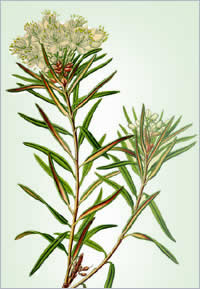For many potential beer fans, gluten intolerance has stopped them from ever quaffing brews made with barley. Those times are now over. Gluten-free beers are popping up all over the country, giving those with Celiac Disease (intestinal damage due to gluten intolerance) a new opportunity to drink with impunity. Not to mention that traditionally, beers from around the world have been made with alternative ingredients, some glutinous and some not. Thee is even a gluten-free beer festival held in Chesterfield, England. Here we will discuss some alternatives to using barley malt in beer, and some substitutes that are possible.
Over two million people in the United States have been diagnosed with Celiac Disease. This represents a large market of potential beer drinkers who otherwise have few alternatives. Many health conscious people are also found in this category of non-gluten imbibers. Gluten is a protein found in such grains as barley, wheat, rye, spelt, and oats. As far as beer brewing is concerned, barley is a huge concern if one is interested in making a gluten free beer. Oats and rye can be a problem as well, depending on what flavor of beer you are planning to make.
Some common substitutes for barley are millet, sorghum, rice, corn, and soybean. The good news is that substitutions are possible. The bad news is that many of them do not taste very much like the stuff made with barley.
Many beers in Japan are now being made with soy or pea protein along with hops and sugar to produce a product known as “third beer”. This technology is fairly recent, but sales are booming in Japan. With a few more years of experimentation, these bold new brewing techniques may be perfected to provide a great new gluten free beer like product.
Traditionally speaking, in Tibet, Nepal, and the surrounding areas, beer made with millet or rice has been a staple drink for many years. This drink, called Chang or Chung can be made at home and features the use of ginger and rice flour yeast cakes to promote starch to sugar conversion as well as fermentation. For more information about making your own Chang, read Stephen Harrod Buhner’s book Sacred and Healing Herbal Beers.
One beer manufacturer that is ahead of the game as far as gluten free beers go is Green’s. Their gluten-free beers are made using Sorghum, Millet, Buckwheat and Brown Rice, and contain no allergens. Their beers boast a high nutritional value as well, with 2x-3x the Zinc and Selenium content of Barley, an increased Calcium content, and rich in B vitamins. Their beers include the Quest (trippel bock), Mission (amber), and Pathfinder (dark) ales, lending a huge variety to a specialty market.
Credit to the first craft beer made with sorghum is claimed by Bard’s Tale Beer with their flagship brew called “Dragon’s Gold”. This beer has made a fine impression and weighs in at 3.8%- 4.7%%, with a hoppy, floral aroma, and, of course, no glutens. The Bard’s Tale brewing company has made a commitment to producing gluten free beer for all, and is an example that other brewers will hopefully follow.
The market for gluten free beer has grown considerably in Japan, while regular beer sales are slumping. With new varieties of gluten and malt free beer emerging in the U.S., this could possibly turn into a burgeoning market.



